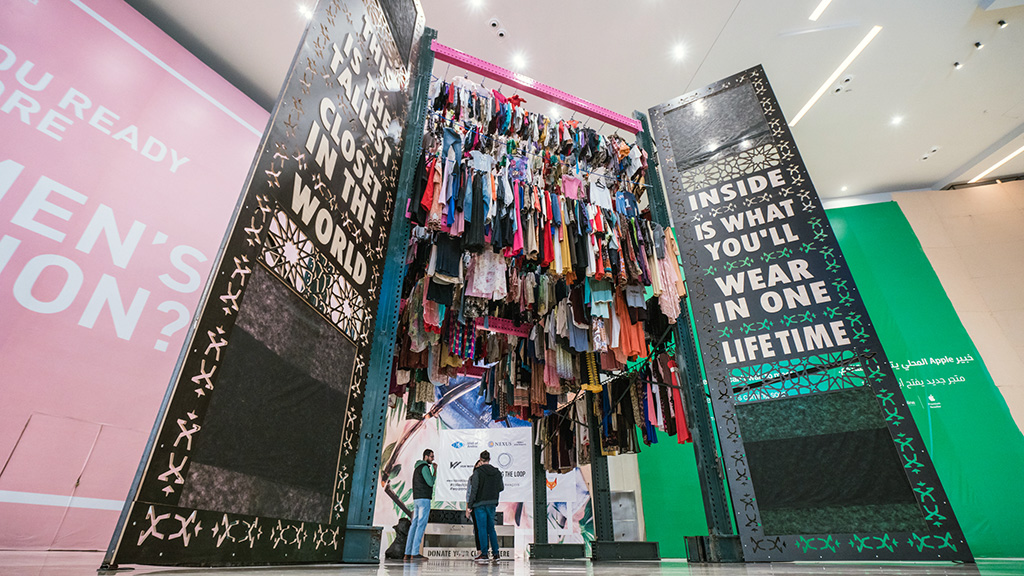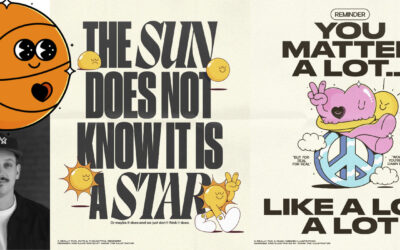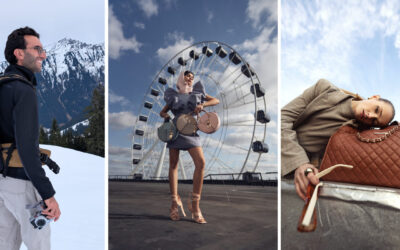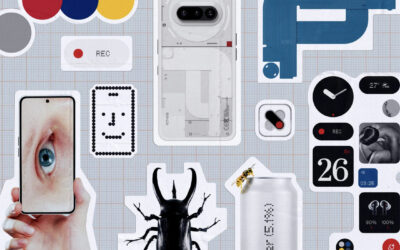In this inspirational talk, artist and activist Benjamin Von Wong shares how our fear of irrelevance might be the greatest tool at our disposal to combat big global issues. Watch the video below, and read on for a summary and extension of what he discussed during TEDxBoston.
When people look at my work for the first time they’re kind of confused. Most think it’s a painting, or something that’s been computer-generated. But if you look really closely at the little lines that make up the parting of the plastic sea [in the first image below, “The Parting of the Plastic Sea”], you’ll notice that each and every one of those represent a single-use plastic straw.
What you don’t see is the work that went into building this art installation. 168,000 plastic straws were collected over the course of nine months with the help of hundreds of volunteers that we then had to collect, sort, clean, organize and convert into this Guinness-record art installation, all to show how small little individual actions can really add up.
But what you really don’t see is the person behind the art. Not “Von Wong the artist,” but “Ben the human being,” and the part of me that drives all of this creativity. It’s a part of me that I think we all have inside of us to some extent, but one that I think is probably a superpower — the thing that drives my creativity is actually fear. It’s a deep fear of irrelevancy.
Does what we do matter?
I spent my early professional years behind a camera, a tool that gave me the freedom to talk to people I never would have talked to before, go places I never would have gone otherwise, and create things straight out of my mind’s eye that never existed. For a brief period, I felt like I had a voice and felt that what I did mattered.
After some early successes, I thought I’d found a formula that worked to get my work seen: simply come up with a great catchy title. For a while, the work I was creating felt fun and exciting, but over time, I realized that there was a different kind of relevancy that was important: the projects I’d been creating had a utility to them – they were fun and pushed me to explore a completely different side myself and find out what was truly unique about me. But something was missing. They were missing relevancy.
I wanted to explore what it would mean to create work that was truly relevant; work that mattered. I realized that all the successes I had were not necessarily due to my art, but rather that I was in the right place, at the right time, with the right skill set.
All the projects I had created during this time had catchy headlines, and I soon realized that I had been riding the trend of clickbait. But trends change, and the clickbait trend has morphed into the trend of the influencer, the Instagrammer, where it’s not necessarily about creating things that are unique and different, but instead creating things that are kind of the same.
Same, but different
This new ‘entertainment’ trend generates more clicks and engagement than art. Entertainment is like junk food. You can eat it all day long, but it doesn’t nourish your soul or body. It makes you a little worse off. Art, on the other hand, is slightly uncomfortable – it challenges the way you see the world and changes your perspective a bit.
I began asking myself what would make my work relevant. I made a deliberate choice to go against what was popular and started to create work that addressed real-world issues, like the environmental impacts of fast fashion, plastics in our clothing material, and eWaste in the electronics industry. Here are a few of my latest projects.
The Parting of the Plastic Sea: An installation made from 168,000 used plastic straws

“It’s just one straw,” said 8 billion people.
For this project, I wanted to encourage people to turn down their next straw by creating a “strawpocalypse” — something so large that if anybody walked by, they couldn’t ignore it.
Zero Waste Saigon stepped in and offered to help, and along with Starbucks Vietnam and hundreds of volunteers, spent over six months gathering a total of 168,000 straws to bring this project to life.
The result was a 10+ feet tall art installation representing the Parting of the Plastic Sea.
Here’s a video about the project and its construction:
Turn Off The Plastic Tap: A three-story art installation of a giant faucet spewing plastics all over the environment.

To build this 30-foot-tall installation, I enlisted the help of the Human Needs Project (HNP), a Kenyan NGO providing essential services and opportunities to people living in some of the harshest conditions in the world.
The build-out of the installation provided temporary jobs for over 100 residents from the slums of Kibera, an underserved community the size of Central Park with 1.2 million residents located just 10 miles from the United Nations headquarters. Plastics were sourced from the informal waste sector, sanitized, and tied together before being brought to the pristine fields of the United Nations.
The World’s Largest Closet

Every second, the equivalent of one truckload of clothing goes to landfill around the world, a fact that often goes unnoticed and ignored. That number can feel unimaginable. Although clothing is part of our everyday lives, the bulk of what we own lies hidden in a space that never sees the light of day: our closets.
The number of new clothes we each buy over our lifetime varies greatly on so many factors including geographic region, gender, socioeconomics, and wealth. But we roughly estimated that the average person in the developed world will go through 3,000 items of clothing over the course of their lifetime.
Telling people to “not buy more stuff” is a relatively impossible mission — after all, there’s a $550 billion industry telling us to do the opposite. What if we could transform this number into a simple tangible experience: The tallest closet in the world!
The 9m tall immersive installation was created entirely with recycled aluminum, steel, and wood, and housed around 3,000 items of donated clothing. In less than five days, the entire structure was assembled at the Mall of Arabia in Cairo by an incredible team of volunteers and CanEX Aluminum.
With a vision of building a tangible representation of our personal clothing consumption, the “Tallest Closet in the World” encourages the public to take small steps toward reducing the amount of clothing that ends up in a landfill.

About the artist
Benjamin Von Wong‘s work lies at the intersection of fantasy and photography and combines everyday objects with shocking statistics. He focuses on causes like ocean plastics, electronic waste, and fashion pollution.
He is also the co-founder of Activism.Studio and a creative advisor for the Ocean Plastic Leadership Network and the Sustainable Ocean Alliance. Follow his work on Facebook, Twitter, YouTube, or Instagram.





